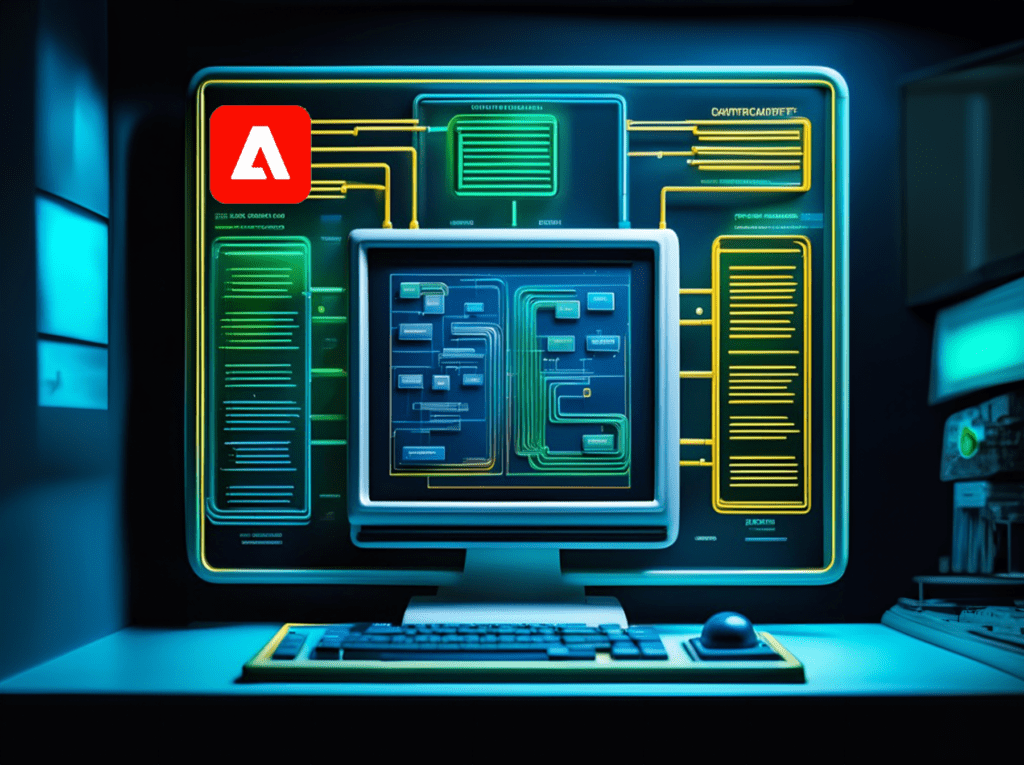Mastering the Art of Balancing Innovation, Optimization, and Evolving Your Tech Stack

Help Me, Help Myself! Making Sense Of It All.
Managing a complex MarTech stack can be fairly overwhelming. With a myriad of innovative ideas, incessant calls for optimization, and essential maintenance tasks, it’s easy to get swept up in the excitement and begin adding new technological solutions without a clear plan. This haphazard approach, however, can result in a stack that fails to meet your business requirements, incurs higher-than-necessary costs, and potentially compromises your data security. None of which makes a great recipe for the success you’re after.
That said, with the right planning, a consistent framework, and perhaps a touch of discipline (yes, I said it!), you can simplify this perpetual cycle of complexity. By taking a step back to assess your current situation and delineate your true objectives, you can effectively pinpoint the necessary technology and establish strategies that foster future growth across your tech infrastructure and associated processes.
In this article, my intention is to guide you towards adopting a fundamental, well-balanced approach for evaluating your existing MarTech stack. This will enable you to better identify opportunities to innovate, optimize, maintain, and phase out technologies in alignment with your roadmap goals. Let’s get started!
Reality Check: Why Should I Care?
In a recently updated report from Gartner, there has been a notable shift in the utilization of technology stacks among marketers. That shift rings to the tune of marketers only leveraging roughly 40% of the capabilities available within their existing marketing stack, a significant decrease from the roughly 60% reported in 2020. While this feature-usage decline has many factors, the top four we frequently see are:
- Functionality Overlap: The MarTech landscape has an overwhelming and increasing overlap in features and functionality among solution providers.
- Talent Acquisition Challenge: Marketers face challenges in recruiting skilled professionals capable of utilizing, managing, and optimizing evolving technologies. Talent’s knowledge becomes dated quickly in the fast moving and ever-changing MarTech landscape.
- Process Integration Hurdles: There are inherent difficulties in seamlessly integrating new tech into existing processes.
- Ongoing Maintenance: The continuous release of enhanced features within native platforms adds to the challenge of maintaining owned MarTech ecosystems.
The diminishing value found in complex marketing stacks is not widely recognized among MarTech owners, but it’s certainly something the C-suites and financial leadership teams have been wondering about as costs for SaaS services continue to rise.
Options Overload.
Adding to the complexity, the MarTech realm now offers a staggering 11,000+ solutions. This reflects a fairly noteworthy 9% increase from the previous year, even as a 7% annual churn rate continues to reshape the landscape.
The evolution of SaaS MarTech providers in the last decade has truly transformed the game, offering us an unprecedented array of choices. Now, there’s likely a MarTech SaaS solution for almost every need, a far cry from the past when we had to rely on a patchwork of individual systems and custom builds to meet diverse use cases. Amid this abundance of options, marketing leaders find themselves in need of a more disciplined approach to evaluate and design solutions tailored to their business needs.
Now, let’s address a crucial reality check. It turns out that many (and I might even venture to say most!) companies lack a comprehensive understanding of their existing MarTech stack – the platforms, systems, and data connections involved. Most MarTech stack owners typically find themselves without:
- A complete inventory of their owned technology
- A comprehensive list of features available across each tool
- An in-depth audit of feature usage for each technology
- A center of excellence for naming conventions and processes
- A clear understanding of data connectivity between systems
Considering the SaaS revolution has been underway for over a decade, it’s highly likely that colleagues both past and present, across various departments, have made technology decisions that might be unknown to you. So, before diving into any tech-centric business initiatives, take the time to truly grasp ‘what’s in your stack.’ Your roadmap solutions might already be lurking there.
Okay, you are sufficiently reality checked. Let’s move on to the plan.
Method to the Madness: Striking the Perfect Balance.
Being a MarTech owner is like starring in a perpetual juggling act, simultaneously playing the roles of tech visionary, efficiency expert, dutiful caretaker, and ruthless defender. The constant pressure to innovate, maximize efficiency, maintain legacy systems, and safeguard customer data creates a dynamic landscape of demands – and it’s precisely this challenge that makes your job both demanding and thrilling, right?
Success in this role hinges on finding balance in all these facets. I suggest employing the four themes outlined below to assess the technology within your MarTech stack. Aim to incorporate projects in your roadmap or initiatives in your sprint-planning that align to these four themes. Audit your ongoing initiatives and standard processes to ensure that action is taken in each area. Before jumping to “I need a new tech platform or project for this!” with every new use case, consider asking yourself, “Do I already have tech functionality that can address this?”
Balancing Mastery: Unpacking the Core Quadrants of Your Tech Stack.
This quest for balance across the four themes is crucial for fostering tech-driven business growth. In my experience, companies immersed in perpetual innovation sometimes neglect existing and legacy systems, while those overly focused on maintenance and customization can become stagnant and ‘legacy-locked.’ With a well-known MarTech stack, evaluating needs against available functionality and embracing a balanced approach to the following four themes positions you for success.
1. Innovation
Innovation in MarTech is the spark that ignites progress. It’s about leveraging technology to introduce fresh and inventive solutions that solve problems, align with the company’s overarching strategy, and potentially offer a competitive edge.
- Does the technology offer a novel or inventive solution to a problem?
- Is it aligned with the company’s overall strategy and technology governance framework?
- Does it have the potential to create a competitive advantage?
2. Optimization
Optimization is the art of making every technological cog turn seamlessly. It involves ensuring that your MarTech tools are used with the utmost efficiency and effectiveness. This theme explores opportunities for performance enhancement and seeks ways to reduce the costs associated with your technology.
- Is the technology used efficiently and effectively?
- Are there opportunities to enhance its performance?
- Are there ways to reduce the operating costs?
3. Maintenance
Maintenance is the unsung hero of MarTech success. It involves the diligent care and upkeep of your technological infrastructure. From addressing known defects and vulnerabilities to having plans in place to handle potential issues, maintenance ensures the smooth and reliable functioning of your tech ecosystem.
- Is the technology being properly maintained?
- Are there any known defects or vulnerabilities?
- Are there plans in place to address any potential issues?
4. Sunset
Sunsetting technology is the strategic act of gracefully retiring or phasing out outdated tools. This theme evaluates the continued relevance, security, and necessity of existing technologies. It explores whether a particular technology is redundant, if more efficient alternatives are available, and if the ongoing cost of maintenance is justified. Sunset is about ensuring your tech landscape remains agile and aligned with evolving business needs.
- Is the technology still relevant and necessary?
- Is it redundant to another available solution?
- Are there newer, more efficient technologies available?
- Is the cost of maintaining the technology justified?
- Does the technology align and meet security and IT governance requirements?
Taking Insights into Balanced Action.
Achieving the perfect balance in your MarTech strategy demands continuous attention to the key pillars of Innovation, Optimization, Maintenance, and Sunset. When delving into the details, however, you might find yourself craving clarity through the questions above.
While there are various ways to prioritize for the optimal balance, let me share a sprint-by-sprint prioritization plan tailored for scale and innovation.
Step 1: Prioritize
Place all the details you wish to innovate, optimize, maintain, and sunset across a priority grid. At Shift Paradigm, one effective method is measuring all roadmapped work based on the following factors:
- Level of Effort: Measure in sprints, hours, or T-shirt sizes (small, medium, large, or x-large).
- Resources Needed: Identify the type and volume of required resources.
- Priority to Business: Use a simple scale – Critical, High, Medium, Low.
- Value to Business: Consider if the initiative could drive cost savings or improve revenue.
- Date Dependencies: Assess active contracts, upcoming events, and budget expectations.
Regardless of how you define these factors, the key is to align the whole team, ensuring everyone understands and is on the same page regarding these items.
Step 2: Determine Capacity
This step is crucial. Accurately measure and articulate what the team is willing and able to handle in any given sprint or month. Consider setting a standard for how many items the team has the capacity to take on in each of the four domains on a monthly basis.
For instance, let’s say your team has recently launched a large DXP/CMS/E-Commerce project that spanned the better half of a year. It’s very likely the team has done a tremendous amount of new innovation and is in a ‘season of maintenance and optimization.’ To support this mindset, you may want to consider breaking out team work plans in the following way:
- Allocate 40% of the team’s workload to maintenance-mode style work.
- Considering this, apply 30% of their time and effort to optimizations. This helps in ‘paying back’ any tech debt you may have accumulated.
- Since we have a new tool we’ve launched, there is likely to be some lingering sunsetting of existing tools the team will also need to work through. In that case, allocate 20% of the team’s capacity to sunsetting relevant tools.
- Finally, that leaves innovation. Keep this to a minimal 10%. This will allow for a small subset of hours dedicated to new features you might have missed in the first release of your tech. Because so much innovation was already done in your earlier release, however, this should likely be much smaller than the other categories during this season of work.
By following these examples and steps, you can strike the right balance for your organization, fostering constant innovation and optimization, and ensuring the efficient management of your technology stack.
Step 3: Apply Agility
Commence each sprint with a review of the items audited and accumulated around the needs of your stack and its stakeholders.
Allocate resources strategically to initiatives aligned with Innovation, Optimization, Maintenance, and Sunset. Strive for a harmonious balance across all four themes, fostering an environment where innovation and maintenance coexist effectively.
Let’s Balance This Act On Home.
Mastering the delicate (and diligent!) dance of Innovation, Optimization, Maintenance, and Sunset in your MarTech strategy is the key to sustained success. As you embark on the sprint-by-sprint journey of prioritization, remember that striking the right balance is an ongoing process that demands strategic alignment and continuous effort. By implementing a comprehensive framework, prioritizing effectively, and fostering a culture where innovation and maintenance thrive side-by-side, you pave the way for scalable and innovative success.
To enhance your MarTech strategy further, I strongly recommend leveraging our Shift Tech Navigator technology strategy and assessment service. With its tailored approach and in-depth insights, Shift Tech Navigator serves as your guiding compass, ensuring that your technology decisions align seamlessly with your business objectives. Embrace the power of informed decision-making and let Shift Tech Navigator elevate your MarTech journey to new heights of efficiency and innovation.





